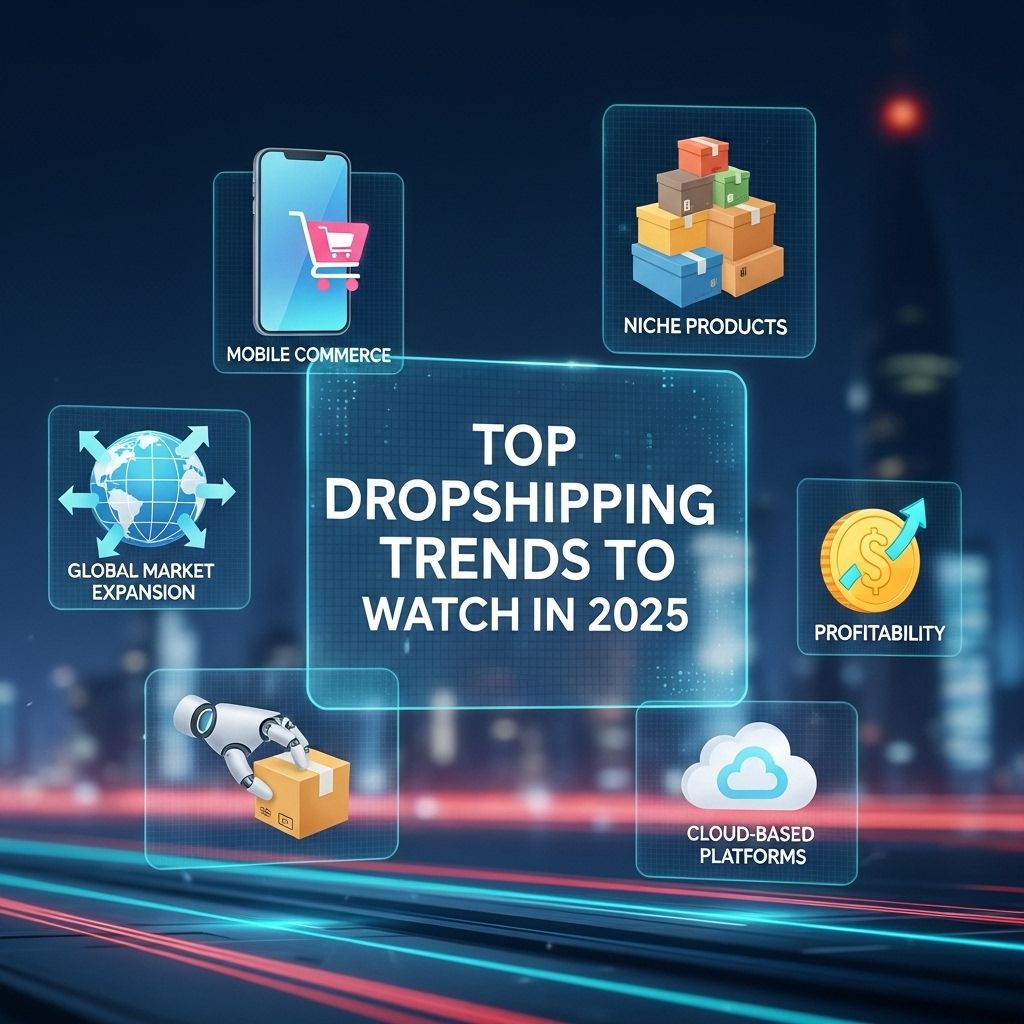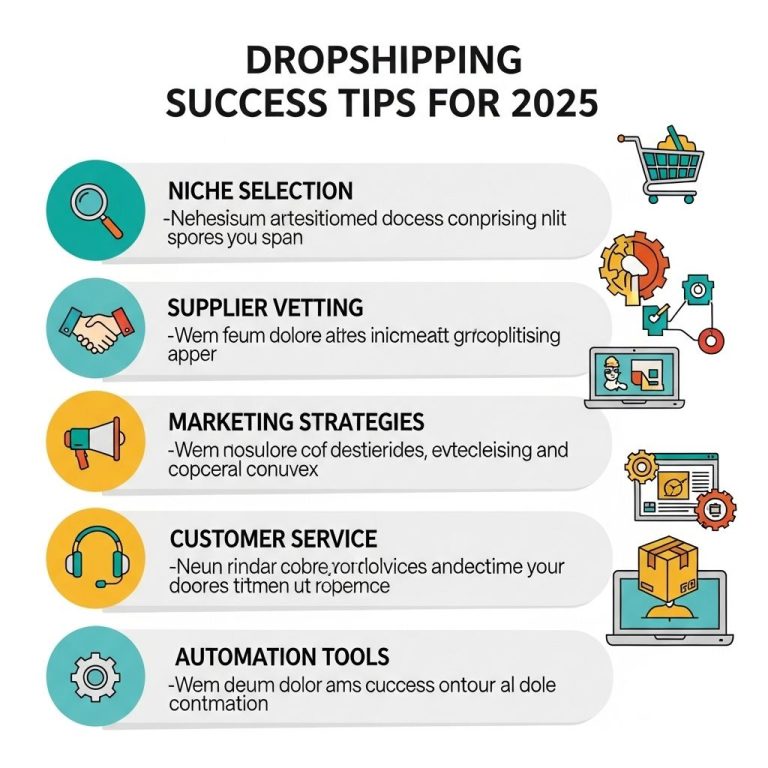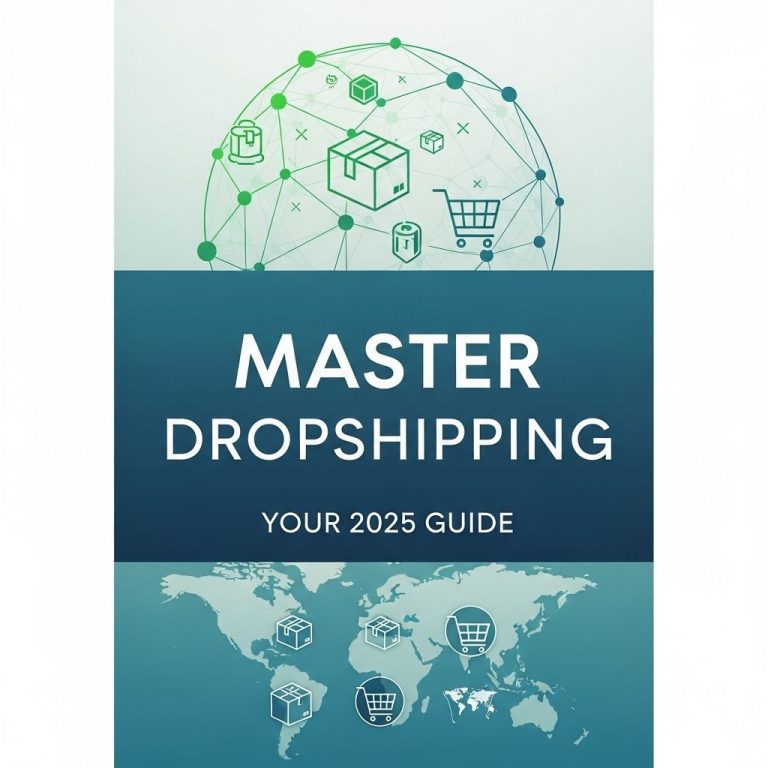As the e-commerce landscape continues to evolve, dropshipping remains a popular business model that allows entrepreneurs to operate without the burden of inventory management. Staying ahead of trends is crucial for those looking to thrive in 2025. In this article, we will explore the emerging trends that could shape the future of dropshipping, along with strategies to leverage them for success.
Growth of Niche Markets
One of the most significant trends in dropshipping is the increasing focus on niche markets. As competition intensifies, dropshippers are shifting toward specialized products that cater to specific customer interests.
Benefits of Niche Dropshipping
- Less Competition: With fewer players in niche markets, dropshippers can carve out a unique space.
- Targeted Marketing: Marketing efforts can be more focused and effective, leading to higher conversion rates.
- Loyal Customer Base: Niche products often attract dedicated customers who are more likely to make repeat purchases.
Integration of AI and Automation
The integration of artificial intelligence (AI) and automation tools is transforming how dropshipping businesses operate. From customer service chatbots to inventory management systems, AI can enhance efficiency and improve customer experience.
Key Areas of AI Implementation
- Customer Support: Utilizing AI-powered chatbots can significantly reduce response times and improve customer satisfaction.
- Personalization: AI algorithms can analyze customer data to deliver personalized product recommendations.
- Supply Chain Management: Automated inventory tracking helps prevent stockouts or overstock situations, optimizing the supply chain process.
Enhanced Mobile Shopping Experience
With the rise of mobile commerce, optimizing dropshipping stores for mobile devices is no longer optional. By 2025, mobile shopping will account for a significant portion of e-commerce sales.
Strategies for a Mobile-Friendly Store
| Strategy | Description |
|---|---|
| Responsive Design | Ensure your website adjusts seamlessly to different screen sizes. |
| Fast Loading Times | Optimize images and streamline code to enhance website speed. |
| User-Friendly Navigation | Simplify the menu and checkout process for a better user experience. |
Sustainability and Ethical Sourcing
As consumers become more environmentally conscious, dropshipping businesses must adapt by focusing on sustainability and ethical sourcing. In 2025, eco-friendly practices will be a significant selling point.
Steps to Embrace Sustainability
- Source Eco-Friendly Products: Partner with suppliers that offer sustainable goods.
- Transparent Supply Chains: Provide customers with information about your sourcing practices.
- Reduce Packaging Waste: Use minimal packaging materials and encourage recycling.
Utilization of Social Media Platforms
Social media will continue to be a powerful tool for dropshippers in 2025. Platforms like Instagram, TikTok, and Facebook are not just for brand awareness but also for direct sales.
Effective Social Media Strategies
- Influencer Collaborations: Partner with influencers to reach a broader audience and build trust.
- Shoppable Posts: Use features that allow customers to purchase directly from social media platforms.
- Engaging Content: Create captivating content to foster community engagement and brand loyalty.
Increased Focus on Customer Experience
In the crowded dropshipping market, providing an exceptional customer experience can be the differentiator that sets a brand apart. By 2025, consumers will expect not just quality products but also stellar service.
Enhancing Customer Experience
| Method | Description |
|---|---|
| Personalized Communication | Use customer data to tailor your communication and offers. |
| After-Sale Support | Implement follow-ups and support to build trust and encourage repeat business. |
| Easy Returns | Offer hassle-free return policies to enhance customer satisfaction. |
Utilizing Data Analytics
Data is a powerful asset for dropshipping businesses. In 2025, leveraging data analytics will be essential for informed decision-making.
Types of Data to Analyze
- Customer Behavior: Understand buying patterns and preferences to tailor offerings.
- Sales Performance: Monitor which products are performing well and adjust inventory accordingly.
- Market Trends: Stay updated on trends to anticipate changes in consumer demand.
Conclusion
As we look to the future, it is clear that the dropshipping landscape will be shaped by various emerging trends. By focusing on niche markets, integrating AI, enhancing mobile experiences, promoting sustainability, leveraging social media, prioritizing customer experience, and utilizing data analytics, dropshippers can position themselves for success in 2025 and beyond. Adapting to these trends will not only help businesses stand out in a competitive market but also foster long-term relationships with consumers, ultimately driving growth and profitability.
FAQ
What are the top dropshipping trends to watch in 2025?
In 2025, expect to see increased automation in dropshipping, the rise of sustainable products, enhanced customer personalization, and the integration of AI for better inventory management.
How will technology impact dropshipping in 2025?
Technology will play a crucial role in dropshipping by streamlining operations, improving supply chain transparency, and utilizing AI for data-driven decision-making.
What role does social media play in dropshipping trends for 2025?
Social media will continue to be a powerful marketing tool, with growing emphasis on influencer partnerships and shoppable posts to drive sales through engaging content.
Are there specific industries expected to thrive in dropshipping by 2025?
Yes, health and wellness, eco-friendly products, and tech gadgets are expected to thrive in the dropshipping market by 2025 due to rising consumer demand.
How important is customer service in dropshipping trends for 2025?
Customer service will be increasingly important in 2025, with businesses focusing on providing exceptional support and personalized experiences to build brand loyalty.
What are some challenges dropshippers might face in 2025?
Challenges may include increased competition, supply chain disruptions, and the need to adapt to changing consumer preferences and regulations.




